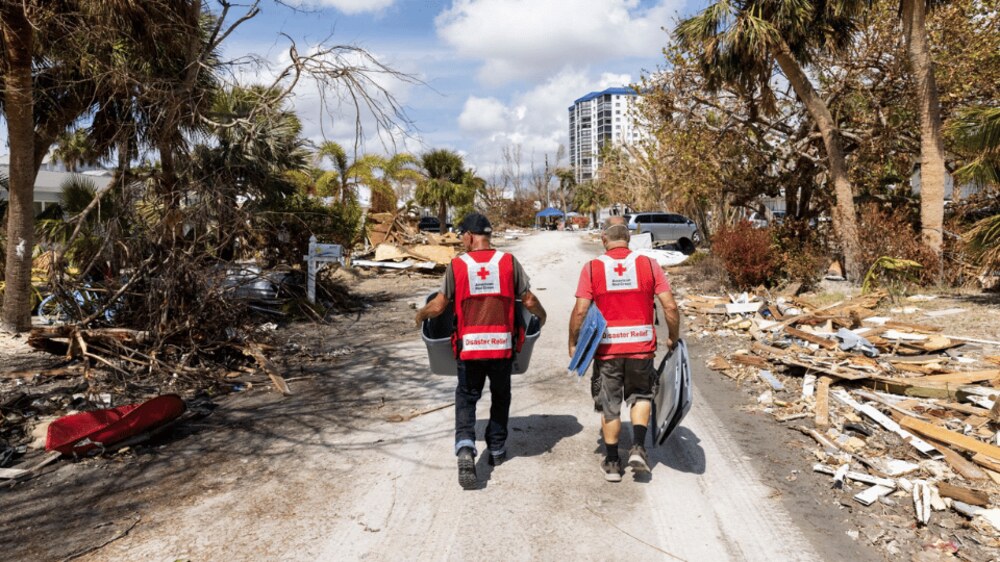In 2023, the American Red Cross has been at the forefront of addressing an escalating climate emergency. The year has seen an unprecedented 23 billion-dollar disasters in the U.S., ranging from severe storms and floods to wildfires and record-breaking temperatures. This series of calamities has led to massive displacements and a severe strain on essential resources, notably impacting the Red Cross’s blood supply.
Facing these challenges, the Red Cross has mobilized substantial support, offering $108 million in financial assistance while significantly expanding its disaster response capabilities. Over a span of just 100 days, the organization responded to over 80 different disasters, a dramatic increase from the 1980s, when the yearly average was only three such events. The recent spike in the frequency and magnitude of these disasters has necessitated nearly continuous major disaster operations by the Red Cross throughout the year.
2023’s most significant challenges included Hurricane Ian’s devastation in Florida, the destructive atmospheric river storms in California, and the deadly southern tornadoes. The Red Cross’s response to these events was comprehensive, providing shelter, millions of meals and snacks, emergency supplies, and financial support to thousands of affected families. Programs like “Shelter Resident Transition (SRT) Follow-Up” have been introduced to provide targeted casework and additional financial assistance to the most at-risk families.
By mid-April 2023, the Red Cross had deployed over 3,400 trained disaster workers. Their efforts resulted in nearly 38,000 overnight stays in emergency shelters, the serving of almost 500,000 meals and snacks, and the distribution of over 156,000 relief supplies. These figures are in addition to the organization’s response to thousands of home fires and smaller-scale disasters across the country. A significant focus has also been placed on recovery planning and offering financial assistance to those most severely impacted by these disasters.
The increasing frequency and severity of these disasters are indicative of the escalating climate crisis. Over the past five years, the incidence of billion-dollar disasters has almost doubled compared to the preceding five years. In response, the Red Cross has doubled its relief operations for major disasters compared to a decade ago.
The Red Cross‘s operations are heavily reliant on the support of volunteers and public donations. The organization plays a crucial role in providing a diverse array of humanitarian services, including disaster relief, blood supply management, lifesaving training, international aid, and support to veterans and military families.
The American Red Cross’s response to the climate crisis in 2023 has been a testament to the organization’s robust and adaptive capabilities. As climate-driven disasters continue to escalate, the Red Cross’s efforts underscore the critical need for ongoing support and adaptation to meet the challenges of an evolving global climate landscape.


















